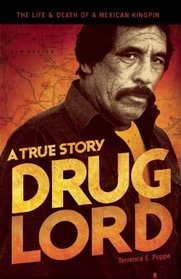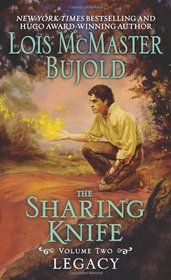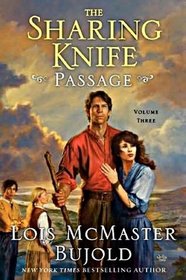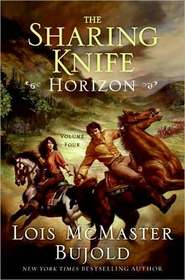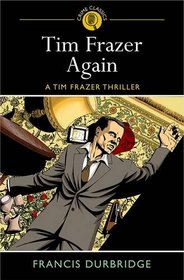Drug Lord: The True Story of Pablo Acosta: The Life and Death of a Mexican Kingpin
by Terrence E. Poppa
Review by jjares
This is the true story of the drug kingpin of Mexico, Pablo Acosta. Terrence Poppa extensively interviewed the drug kingpin and many associates. As a result, a startling, disturbing expose of Mexican and American policies that don’t do enough to stem the drug tide emerges. Starting as a marijuana salesman, Pablo quickly added heroin. When the Columbian drug lords came calling with cocaine, Acosta allowed them to use his distribution system — for a fee. After a while, the Columbians got too powerful, and Acosta tried to kill them off.
Acosta saw himself as a Robin Hood for the poor of Mexico. He “loaned” money to the poor (people were proud and wanted to feel there was a chance they could repay the loan), built and repaired schools, built nursing homes for the elderly, paid for surgeries, and provided civic support for the poor areas in his region of northern Mexico. Acosta avered that the government should have been doing these good works, not a drug lord. Acosta saw himself as a benevolent Papa. However, he killed rivals, stole thousands of American cars, trucks, and airplanes yearly, and corrupted officials, the police, and soldiers.
One of the author’s most upsetting declarations is that in the 1970s and 1980s, the Mexican government (state, local, and federal) and the Mexican Army were all part of the drug business. They protected approved drug dealers (Pablo Acosta paid them $100,000 monthly to conduct his business). The government also planted, grew, and sold marijuana on its own. US agents got virtually no assistance across the border to stop drug shipments because the Mexicans were making too much money by turning a blind eye. The only reason the Mexican government killed Pablo Acosta is that he talked with journalists, telling the dirty secrets of the Mexican government and military.
As soon as Acosta was killed by Guillermo Gonzalez Calderoni of the Mexican Federal Judicial Police, he was kicked upstairs (gotten rid of, so the corruption could continue). However, it later came out that Calderoni was actually acting for the PRI (Partido Revoucionario Institucional). Calderoni worked through orders of the PRI (more info below), so they could appear to be trying to stamp out organized crime. In reality, the PRI was the drug cartel. The author points out that the deeply ingrained corruption ceased when Vincente Fox became President of Mexico. However, the author states that before Mr. Fox, the crime went all the way to the President of Mexico.
One of the most surprising things I learned from this book is that the Acosta clan sampling the goods. That is one of the cardinal taboos in drug dealing — to imbibe in the product. Unfortunately, this seems to have created the conditions under which drug lords were taken down. After they became addicted, they became unreliable as drug dealers.
Please note that this is the 20th year update of the original version (1998). With a well-trained eye, the author offers an update on the drug scene since Pablo Acosta. Things have changed in the Mexican drug scene. Now, there are $ 30+ billion of drugs pouring into Mexico yearly. However, the government is no longer acting as a mafia leader, controlling organized crime for the benefit of the people in power. The PRI (Partido Revoucionario Institucional) is no longer controlling the government. Now, the highest levels of government are separate from the drug traffic. However, so much money is to be earned that when one drug lord crashes, several more are ready to take his place. Politicians, bureaucrats, and moneyed citizens are now running the drugs. They aim to do it quietly, with no fanfare.
It took decades for reform-based Mexicans to oust the PRI from the government. The author points out that the US must support the democratic Mexican government trying to remove drugs from their economy. It is an uphill battle. This is an eye-opening book. I cannot recommend it too highly. The author tells his story in such an engaging way that the pages fly past.

